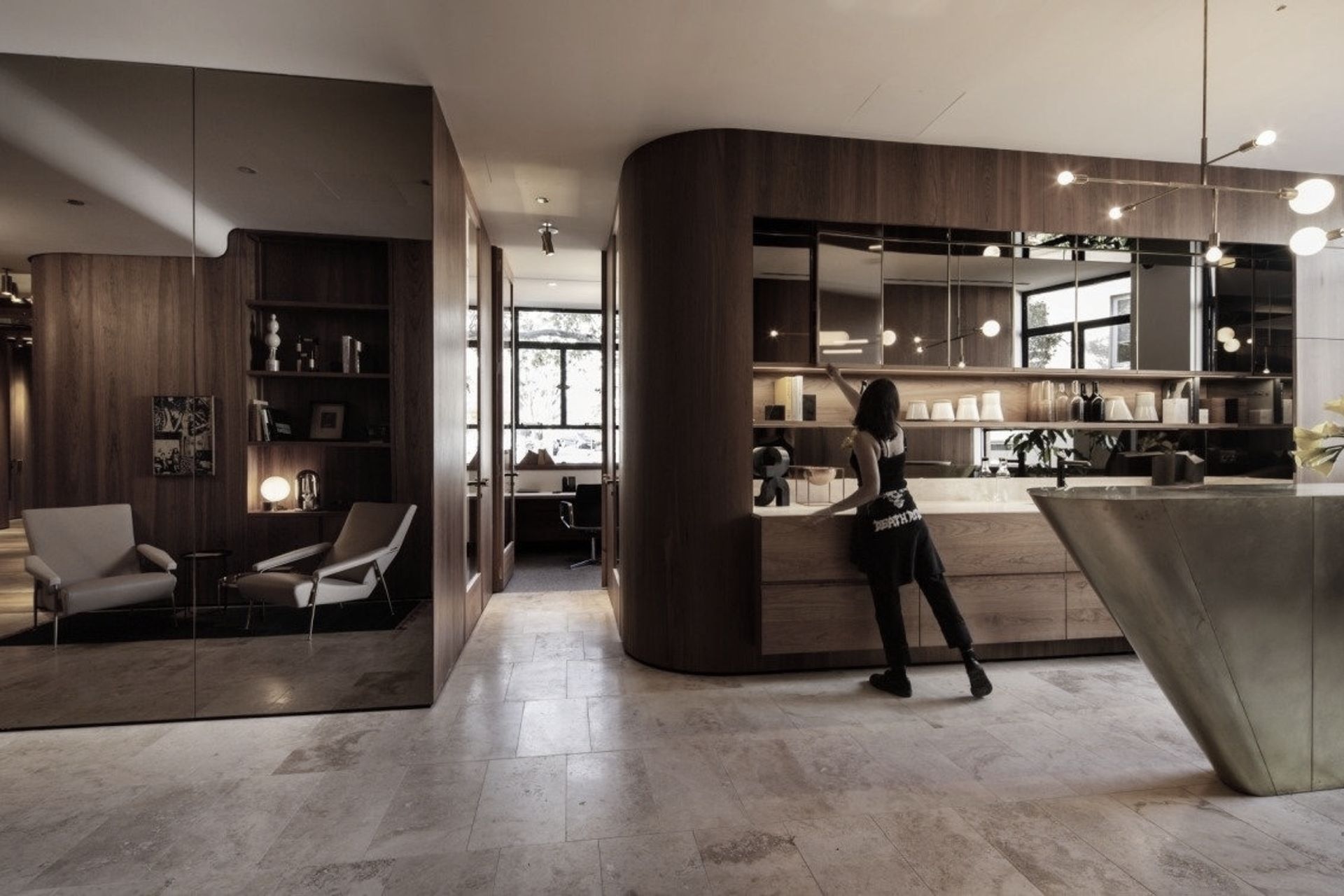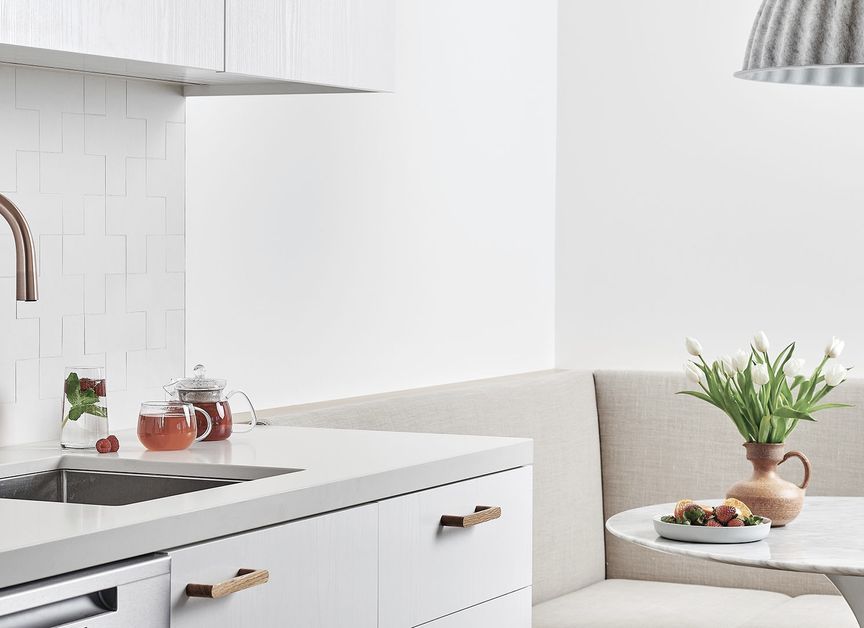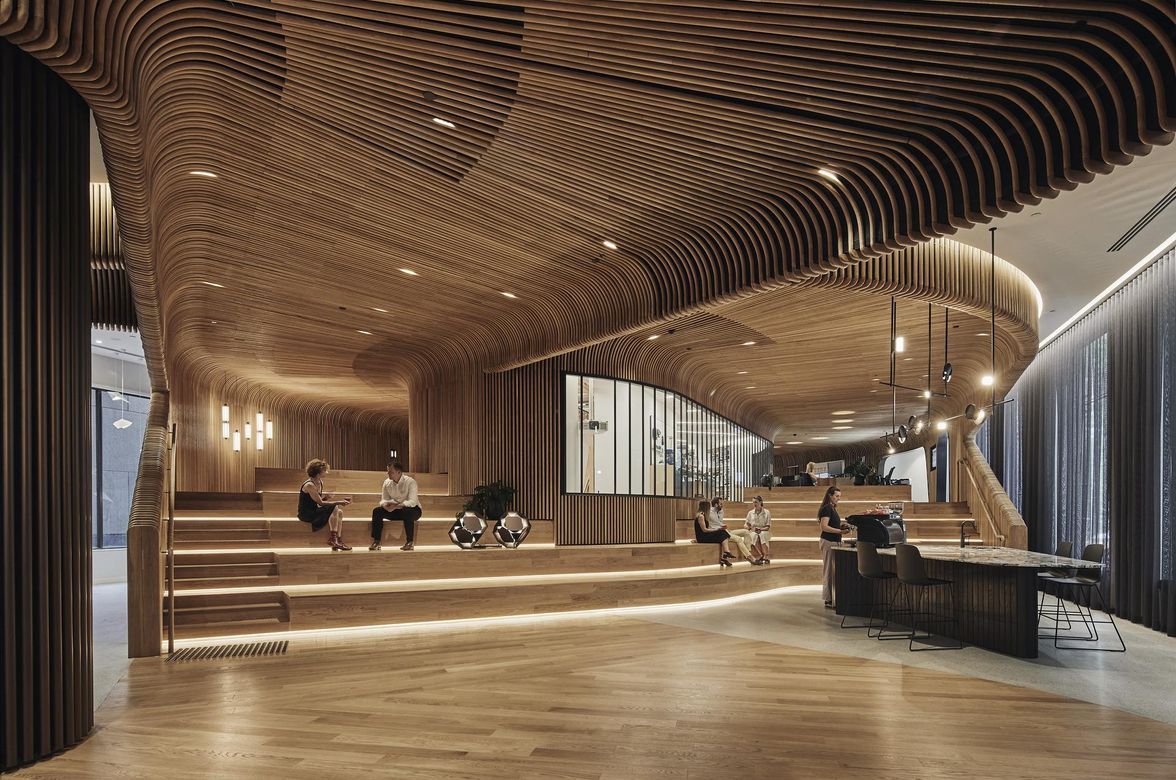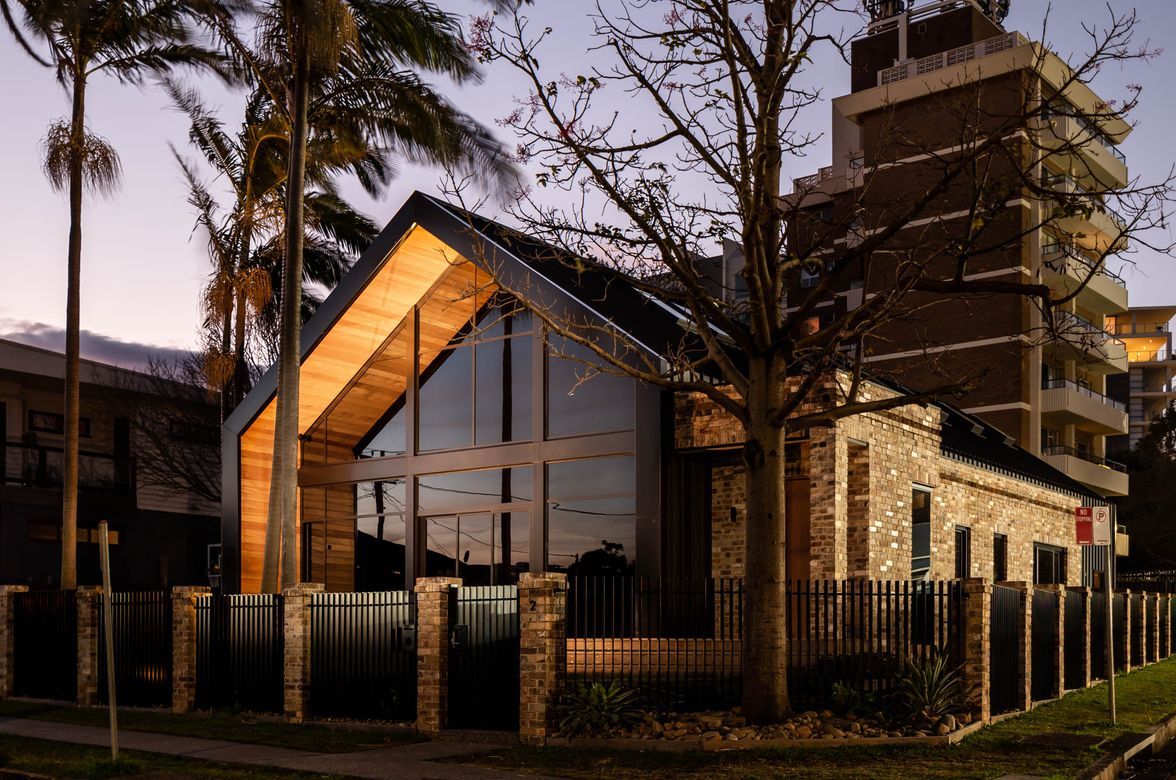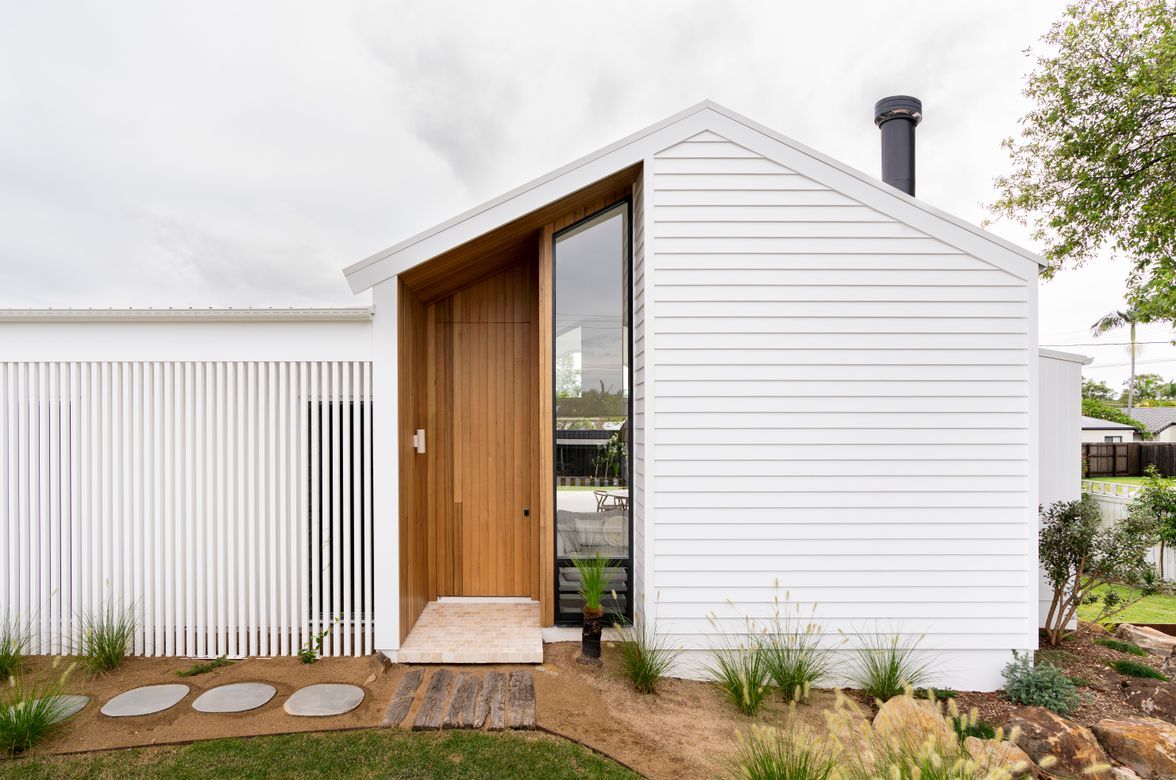People, projects, and possibilities are what make Melbourne’s newest innovation precinct the place to be for ideas, connection and collaboration. Melbourne Connect is an epicentre of knowledge, research, experimentation and innovation.
When the team at Woods Bagot set out to design and build an innovation precinct for the University of Melbourne, the first step was to acknowledge what the precinct would be replacing on the site and to honour what had been achieved there. The Royal Women’s Hospital, located on the site since 1856, had been dedicated to advancing women’s health and wellbeing. “A lot of medical innovations for women were born out of this hospital and we were very cognisant of the cultural history of the site when we started,” Woods Bagot principal Hazel Porter told ArchiPro. “We really wanted to instill something here that respected that cultural history,” Hazel says.
Re-using some of the original bricks was a good place to start. “We had the brickwork tested but unfortunately it wasn't strong enough to be used structurally in a wall or a vertical sense so we reused it in the paving,” Hazel says. More than 25,000 of the demolished hospital’s bricks were incorporated into the paving of the Oculus, the welcoming outdoor gathering space at the centre of the new project.
“Using some of the brickwork from the hospital gave us a really authentic way to bring the heart of the hospital into the Oculus space,” Hazel says. An outline of the hospital’s footprint was also incorporated into the paving, a subtle way to acknowledge an important moment in Melbourne's history.
MEETING OF MINDS
The Oculus, also known as Womin Djerring (Come Together), is surrounded by the five buildings that make up Melbourne Connect. Laneways branching out from the Oculus create breathing space between the buildings and invite the public in from the surrounding streets.
Melbourne Connect was never designed for the exclusive use of university students and staff, after all. The idea was for it to be a meeting of minds, whether that be students, researchers, industry leaders, start-up communities, artists or government. A permeable facade, revealing glimpses of workshops, classes, exhibitions and events from the street, further encourages interaction and inclusivity.
The 3600sqm Superfloor, a two-storey internal space comprising meeting, event, workspace and dining areas, links the five buildings together and creates an immersive environment conducive to exploring new ideas, showcasing work and collaborating.
The buildings range in height from six to 10 storeys, and house everything from post-graduate accommodation and learning, teaching and research areas to a childcare centre, museum and fabrication laboratory.
Each building has a striking facade, visible from the street as well as from the internal courtyard. Expressive of the sustainability aspirations of the precinct, and the research being undertaken within, the façade strategy is a performance-driven, energy-efficient responsive solution. Glazed façades with varying patterns address the streets. The Swanston Street façade features a repeated triangular form for each panel with adjustable coloured opaque pieces controlling the amount of sunlight that shines through. Two buildings face Cardigan Street, one of which displays rectangular panels with neutral hues to cover the windows, while the other is scaled back and projects a subtle face. While the arrangement of these elements is mixed, the palette and use of colour are consistent and inspired by the central garden, using a series of red, ochre, and terracotta-hued bricks.
“The way the sun moves and the way it tracks around each one of the facades is constantly changing,” Hazel says. “It changes with the time of day, it changes with the weather, the seasons, the shadows and the reflections; it's very active in the way that it visually expresses what's going on around you.”
From street level, a two-storey red brick ‘podium’ grounds each building. The podium’s scale and materials tangibly tie the project back to the terrace houses of Carlton, the suburb in which Melbourne Connect sits.
Above the podium, each of the towers’ attention-getting facades features triangular glass prisms and coloured sun-shading hoods.
“We did a lot of work to track the solar loading … the self shading of the facades is a really important part of the way the building sustainably looks after itself,” Hazel says. “It reduces heat so there's less energy consumed to keep the temperatures constant and the working spaces pleasant.”
The University of Melbourne set Woods Bagot an ambitious sustainability agenda when they selected the global architecture studio for the project, which is on track to achieve NABERS, Green Star and on-site renewable targets.
The three colours on the outside of the facade’s hoods are consistent. An intense red at the base that knits in well with the brickwork, merging into shades of sunset orange and champagne in the upper storeys.
The colours are replicated on the inside of the shade hoods, providing vibrant internal spaces without taking away from the city views.
DIGITAL DISPLAY
The innovation precinct is also home to Science Gallery Melbourne, located on the ground floor. At the main entrance on Grattan Street, pixelated bricks create a supersized portal.
Cream-coloured bricks referencing the original hospital, break up the red and create a starburst that radiates out from the glass entry doors. On either side of the entry, woven into the pixelation, glass bricks work as an evolving digital canvas. Up close, digital screens behind each glass brick reveal moving content that reflects the museum’s exhibitions and events. Step further back from the wall and it becomes a dynamic facade of movement and texture.
“Behind each glass brick is a mini screen, much like a smartphone screen, and each one of them is connected,” Hazel explains. “We did a lot of prototyping to make it work and to understand how many of them we needed and where they sat best so that somebody who's six and somebody who's six foot could actually participate and enjoy them. Viewed from across the street, they are all speaking as one but as you move up closer you can actually start to read words and see the images.”
IN FULL SWING
With on-campus learning back in action, the Woods Bagot team and collaborative network of specialists, consultants and construction crews that helped bring it to life can enjoy the fruits of their labour – seeing people using and enjoying the space.
“We're really proud of the way that the buildings really express what's happening as an innovation precinct, and we’re pleased with how it sits in the city,” says Hazel.
The Oculus is Hazel’s favourite part of the project, however. With flexible seating woven into landscaped gardens and walkways, the Oculus serves as the University of Melbourne’s ‘quad’. “We imagined this place firstly as a public area and secondly as a way for the university to give back to the city,” Hazel says.
As the trees grow and the landscaping matures, this open-air, wi-fi-enabled gathering place is becoming all the more appealing. “The landscaping [by ASPECT Studios] is really bringing the Oculus to life; it's really thrilling to see it growing,” Hazel says. “The Oculus is really the heart of the project and the way it organises the buildings is really important; it's the heart of the laneways coming together, it's the heart of the buildings, it's the heart of what innovation is, really.”
- Client: University of Melbourne and Lendlease
- Size: 74,000 sqm
- Completion: 2021
- Collaborators:
ASPECT Studios
Arup
Hayball (residential building) - Photography: Dianna Snape and Peter Marko


























